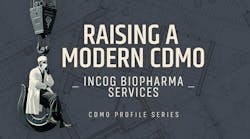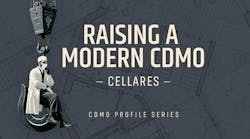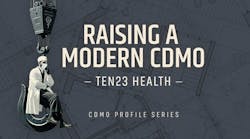Industry’s adoption of lean principles has had a tangible impact on business performance across the life sciences. As pressure to drive down costs and improve productivity has escalated over the last decade we have seen lean applied as a foundation for programs ranging from facility design to product development. The last decade has been defined by change—whether the change is a result of consolidation, innovation or regulatory policies. It is unlikely the next decade will be any different. However, if we look at the construct of the current industry business models there are elements that will likely be integral to any future business strategy.
Much of the move to adopt and implement lean principles stems from the need to improve business performance. By measuring performance against a standardized metric it becomes easier to realize where improvement opportunities lie. One clear solution to enhance business performance has been the strategic decision to outsource key pieces of the product development lifecycle. Partially driven by the need to reduce the cost of goods sold (COGS), the lure of cheap labor was undeniable. With this decision came inexorable issues, such as how do executives apply the core tenants of lean while stretching their company’s value stream across the globe? How to leverage the core principles of standardized work practices and process predictability to cultures still in their infancy in terms of understanding the relationship between product quality and work practices?
Today we find that the basic drivers for outsourcing are changing. As the global cost of transport services escalates, the pieces of the product development lifecycle that make business sense continue to shift as well.
Applying lean principles to an outsourcing strategy may seem unusual but the basic tenets of the principles of lean remain true; understand and maximize the value stream as it applies to the customer and you will improve your overall business performance.
A Framework for Lean Outsourcing
While there is no magic recipe for implementing an effective lean outsourcing program there are some practical considerations to ensuring a successful effort:
1. Understand Customer Value
As with any lean endeavor the onus falls on the organization to correctly identify what the customer values. If we look at the industry in the U.S. today most business strategists are abandoning mass production and vertical integration models and are embracing a variable-asset or, outsourced contract-manufacturing model that, on paper, would position the business to be more globally competitive. This strategy has obvious advantages but it also has pitfalls. Defining the value proposition for the customer is to a great extent what defines the long term success of a lean strategy. While COGS may drive a near term decision to risk quality in favor of a significantly lower COGS, in our industry, quality is a great equalizer and any strategy predicated on lower COGS will ultimately fail as competitors find a way to equal or better the delivery process solutions. Ultimately, this position is not sustainable. Understanding where your company stands in terms of customer value, e.g. responsiveness to change, low cost product or service, highest quality product or service, will dictate the potential long term benefit of outsourcing.
2. Don’t Forget That Inventory Kills
Truly lean companies invest a great deal of time building systems with their suppliers to ensure they only review what they need, freeing up needed cash for activities that really drive business performance. The temptation when sourcing to low-cost regions of the world is to agree to larger quantities than are required.
3. Invest In IT Infrastructure
The same factors that define success in the supply chain locally apply to global sourcing. Ensure the necessary transparency and connectivity exist for your suppliers around the world to support your business decisions
4. Lean Your Processes First
Processes that are measured, optimized and monitored are much easier to transfer. By understanding the current state of a process you are much less likely add non-value added process steps just because labor is cheap. Starting with a process that minimizes waste will simplify and quantify the measurement of a successful outsourcing endeavor.
5. Meaningful Metrics
Apply the same metrics you use locally to the processes being outsourced. Sloppy operations, no matter how cheap will only cause heartache downstream. Metrics like Right-the-First-Time, cycle time, Tak time, Cost of Poor Quality, etc., are just as meaningful in an outsourced process.
6. Choose the Right Partners
When possible, add lean understanding and level of execution to the evaluation criteria, in addition to cost. Recognize that doing business globally means adapting to different cultural mores and business practices. Companies that have implemented lean principles or have an operational excellence program underway will think the same as you do. Or if you are a start-up looking to manage rapid growth, a mature lean partner will minimize the risk associated with expanding too fast.
7. Include your Customers Feedback in the Outsourcing Decision
The pressure on business performance is not going to go away any time soon. Payer pressure and shareholder value pressure are often the basis for outsourcing decisions. Transparency is a common element in lean companies. When considering outsourcing overseas, measure the benefits and risks against the value proposition of your customers.
8. Recognize Risk
When we talk of risk management, the focus should not be on adding risk but on reducing risk. The challenge comes with properly weighting the risks versus the short and long-term benefits. Ensuring a risk assessment is part of the decision making process is important especially when dealing with companies that operate using different regulations and business mores. Lean companies identify risk in all forms of variability and work to reduce it.
Conclusion
The trend in our industry toward a global supply chain is not likely to change any time soon. Outsourcing, like any other central process within an organizations business plan, can benefit from employing lean principles. By adopting the same lean principles and practices used to manage local processes and suppliers, the short and long term risks of outsourcing can be dramatically minimized.
References:
1. Tuck, J. (2006) Lean Outsourcing: It's Coming. Manufacturing Market Insider, JBT Communications
2. Olsen, E. and Zetter, M. Lean manufacturing and Outsourcing (2006), www.ventureoutsource.com
3. Rosenthall, B. How Wipro Translated Toyota’s Lean Principles to IT Outsourcing, 2010





